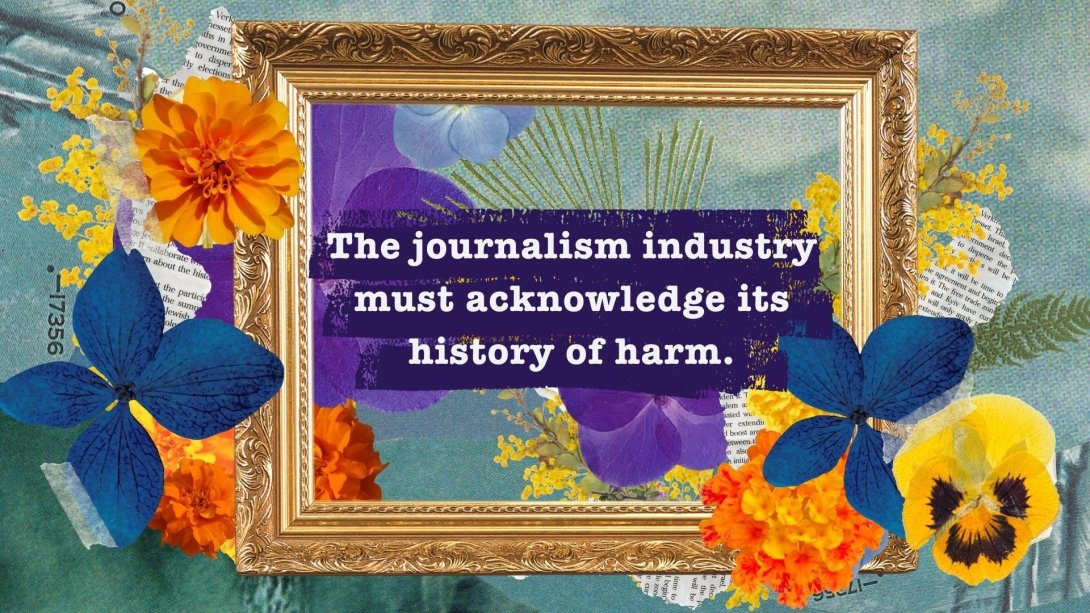Journalism's Violent History Requires Repair

Over the past year and a half, I’ve been researching the need to prioritize healing and repair to confront journalism’s violent history. I’ve been investigating different societal-level repair processes throughout the world and have been talking to Black media-makers about healing in journalism. I’ve also been listening to people describe how journalism has negatively impacted their communities — and express their visions for a way toward repair.
The need for media reparations
This has culminated in Free Press’ newly created Reparative Journalism Project, which draws on the community-organizing model of News Voices and the media-reparations call of Media 2070. This project will use a reparations framework to co-create processes of repair that journalism institutions must undertake — and that Black communities can use to initiate our own healing. It is a call to prioritize institutional, cultural and communal healing within the field of journalism and with all of its stakeholders.
To welcome the Reparative Journalism Project to the world, we’re launching a video series to highlight the learnings from this exploratory process. In the coming year, we’ll share examples of how journalism has harmed Black communities and other communities of color, highlight what journalism could learn from processes of repair undertaken globally and visit worlds where journalism prioritizes repair.
In our first video, “A Journey Toward Reparative Journalism,” we discuss the legacy of harm in the field of journalism and sit with how the subjugation of Black and Indigenous folks is central to the roots of journalism.
Anti-Black racism is the connective tissue
There’s a throughline between how white supremacy kept the earliest newspapers afloat and the racist and capitalist underpinnings of the contemporary crime beat (which does little to make our communities safer). There are connections between how newspapers encouraged the detainment of Japanese-Americans during World War II and the ways in which today’s media portray immigrants, migrants and asylees looking to make a home in the United States. The news coverage that fueled the Tulsa Race Massacre of 1921 has its roots in the ways that newspapers fanned the flames of violence leading up to 1864’s Sand Creek Massacre of Cheyenne and Arapaho people.
Many scholars, journalists and organizers have surfaced and resurfaced these connections throughout the history of journalism. Reparative journalism aspires to create space to fully grasp this history and experiment with strategies that will lead us to 2070, a future where journalism has alchemized this harm.
Much of this history isn’t discussed in journalism schools, newsroom orientations or conference panels, but it is central to how journalism is created and experienced by all of us today. Our collective understanding of this history will be central to our ability to bring about repair. As journalist and anti-lynching activist Ida B. Wells said, “The way to right wrongs is to shine the light of truth on them.”
This is the first video in our series. There is so much history we couldn’t fit in a four-minute video. We hope this serves as an invitation to let your curiosity lead you to learn more. Keep an eye out for future videos and make sure to check out these additional resources.
‘Officials Say…,’ Columbia Journalism Review
News for All the People: The Epic Story of Race and the American Media, Juan González and Free Press’ Joseph Torres
“The Media’s Role in Anti-Asian Hate,” Free Press